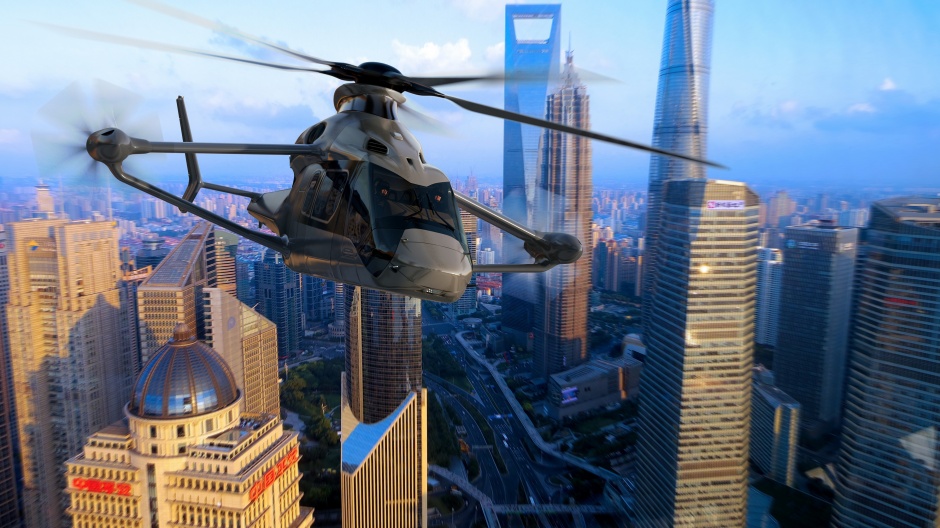
Codenamed Racer (Rapid And Cost-Effective Rotorcraft) the high speed and high efficiency rotorcraft is being developed through the EU’s CleanSky 2 Initiative, a research program aimed at developing technologies that can reduce the environmental impact of aviation.
According to Airbus the helicopter is designed to achieve the best-possible trade-off between speed, cost-efficiency, sustainability and mission performance and will be optimised for a cruise speed of more than 400km/h.
As previously reported by The Engineer, the key concept represents a fundamental change in the way the helicopter is propelled and kept aloft. Rather than generating thrust from the main rotor by twisting the blades of the propeller along their axes to change their angle of attack to the air, the craft is equipped with two forward-facing propellers placed at the end of short forward-angled wings that sit on top of the aircraft cabin and underneath the main rotor, positioned so that their rotation does not interfere with that of the main rotor.
A key feature of the aircraft is an innovative “box-wing” structure that enables a number of benefits; including improved lift performance in forward flight, and the incorporation of so-called “pusher “ propellers on the lower wing, which produce more thrust than puller propellers.
This wing-structure was developed through ASTRAL (Advanced Wing Structure for Rotorcraft Additional Lift) – a collaborative project involving engineers from GE Aviation and the University of Nottingham’s Institute for Advanced manufacturing.
Final assembly of the demonstrator is expected to start in 2019, with a first flight the following year.

Glasgow trial explores AR cues for autonomous road safety
They've ploughed into a few vulnerable road users in the past. Making that less likely will make it spectacularly easy to stop the traffic for...